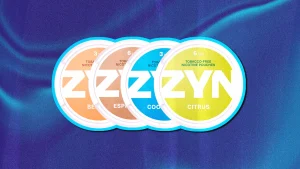The market for new nicotine products, such as Zyns and vapes, is a rapidly growing and ever-evolving landscape. With the rise in popularity of alternative nicotine delivery systems, manufacturers are constantly innovating and creating new products to meet the demands of consumers. Zyns, which are nicotine pouches that dissolve in the mouth, have gained traction as a discreet and convenient way for individuals to get their nicotine fix without the need for traditional cigarettes or vapes. Vapes, on the other hand, have become a staple in the nicotine market, offering users a customizable and often more flavorful experience compared to traditional tobacco products.
Despite the controversy surrounding these new nicotine products, there is no denying the significant impact they have had on the industry. As more and more people turn to alternative nicotine products, the market for Zyns, vapes, and other new products continues to expand. With this growth, however, comes a host of challenges and concerns. From questions about the potential health risks associated with these products to debates about their appeal to young people, the market for new nicotine products is not without its complexities.
One of the key factors driving the popularity of Zyns, vapes, and other alternative nicotine products is their ability to provide users with a more discreet and customizable experience compared to traditional cigarettes. Zyns, for example, offer a smoke-free and odorless way for individuals to consume nicotine, making them an attractive option for those who want to avoid the stigma associated with smoking. Similarly, vapes allow users to choose from a wide range of flavors and nicotine strengths, allowing for a more personalized and enjoyable experience.
In addition to their convenience and customizability, Zyns, vapes, and other new nicotine products have also been touted as potentially safer alternatives to traditional cigarettes. While research on the long-term health effects of these products is still ongoing, many experts believe that they may pose fewer risks than smoking. This has led some smokers to switch to Zyns, vapes, and other alternative nicotine products in an effort to reduce their exposure to harmful chemicals found in tobacco smoke.
Despite the potential benefits of Zyns, vapes, and other new nicotine products, there are also concerns about their impact on public health. Some critics argue that these products may serve as a gateway to traditional smoking, especially among young people. Additionally, there are worries about the unknown long-term health effects of using these products, as well as the potential for addiction. As the market for new nicotine products continues to grow, it will be important for regulators, manufacturers, and consumers to carefully consider these issues and work towards finding a balance that promotes harm reduction while protecting public health.
In conclusion, the market for Zyns, vapes, and other new nicotine products is a complex and rapidly evolving landscape. While these products offer users a more discreet, customizable, and potentially safer alternative to traditional cigarettes, there are also concerns about their impact on public health and their appeal to young people. As the industry continues to innovate and grow, it will be crucial for all stakeholders to work together to address these challenges and ensure that the market for new nicotine products remains safe, responsible, and beneficial for all.

The Rise of Zyns: The New Frontier in Nicotine Pouches
The rise of Zyns, a new frontier in nicotine pouches, has taken the tobacco industry by storm. These discreet, smokeless pouches deliver a quick and satisfying nicotine hit without the need for smoking or vaping. With flavors ranging from mint to citrus, Zyns have gained popularity among adults looking for a convenient and socially acceptable way to satisfy their nicotine cravings. Unlike traditional tobacco products, Zyns do not produce smoke or lingering odors, making them ideal for use in places where smoking is prohibited. The convenience and discretion of Zyns have also made them a popular choice among individuals looking to quit smoking or reduce their nicotine intake.
However, concerns have been raised about the potential health risks associated with nicotine pouches, as well as their appeal to underage users. Critics argue that the marketing and availability of Zyns may contribute to the normalization of nicotine use among young people. Despite these concerns, the popularity of Zyns continues to grow, with new flavors and formulations being introduced regularly. As the tobacco industry continues to evolve, it is clear that nicotine pouches like Zyns are here to stay, offering a new and innovative way for adults to enjoy nicotine without the need for traditional tobacco products.
Vapes vs. Zyns: Comparing Modern Nicotine Delivery Systems
Vapes and Zyns are two popular modern nicotine delivery systems that have gained traction in recent years. Vapes, also known as electronic cigarettes, are battery-operated devices that heat a liquid containing nicotine and other chemicals to create an aerosol that is inhaled by the user. Zyns, on the other hand, are nicotine pouches that are placed between the gum and lip, allowing the nicotine to be absorbed through the mouth. Both vapes and Zyns offer a convenient and discreet way for users to consume nicotine without the need for traditional cigarettes. However, there are some key differences between the two products. Vapes come in a wide variety of flavors and nicotine strengths, allowing users to customize their experience.
Zyns, on the other hand, are available in a limited range of flavors and nicotine strengths. Additionally, vapes produce a visible vapor when exhaled, while Zyns are completely odorless. Some users prefer vapes for the social aspect of vaping, while others prefer the simplicity and convenience of Zyns. Ultimately, the choice between vapes and Zyns comes down to personal preference and lifestyle. Both products offer a modern alternative to traditional tobacco products, but it is important for users to be aware of the potential health risks associated with nicotine consumption in any form.

Market Trends: How New Nicotine Products are Shaping Consumer Preferences
Market trends are constantly evolving, especially in the realm of nicotine products. With the rise of new and innovative products such as e-cigarettes, vape pens, and nicotine salts, consumer preferences are shifting to these alternatives. These products offer a different experience for users, with various flavors, strengths, and delivery methods that cater to a wide range of tastes and preferences. Additionally, the convenience and discreetness of these products make them appealing to many consumers who may be looking for a more discreet way to consume nicotine. The market for these new nicotine products is rapidly expanding, with more companies entering the market and offering a variety of options for consumers to choose from.
One factor driving the popularity of these new nicotine products is the perception that they are potentially less harmful than traditional cigarettes. While the long-term health effects of these products are still being studied, many consumers believe that they are a safer alternative to smoking. This belief, combined with the enticing flavors and customizable options offered by these products, has led to a surge in their popularity among consumers. In addition, the ease of access to these products through online retailers and specialty vape shops has made them more readily available to a wider audience.
As these new nicotine products continue to shape consumer preferences, it is important for companies to stay ahead of the trends and adapt their offerings to meet the changing demands of their customers. This may involve developing new products, expanding flavor options, or improving the technology used in these products to enhance the user experience. By staying attuned to market trends and listening to consumer feedback, companies can ensure that they remain competitive in the rapidly evolving nicotine product market. Ultimately, the success of these companies will hinge on their ability to anticipate and respond to the changing preferences of consumers in this dynamic industry.
Regulatory Challenges: Navigating the Legal Landscape of Nicotine Innovations
Navigating the legal landscape of nicotine innovations presents a myriad of challenges for companies in the tobacco and e-cigarette industries. With constantly evolving regulations and policies, companies must stay informed and adapt quickly to remain compliant and competitive in the market. One of the major regulatory challenges companies face is keeping up with the changing rules and restrictions on advertising and marketing of nicotine products. These regulations vary by country and region, making it difficult for companies to create consistent marketing strategies across different markets. Additionally, the classification of new nicotine delivery systems, such as vape pens and e-cigarettes, as tobacco products or medical devices further complicates the regulatory landscape.
Companies must carefully navigate these classifications to ensure their products are marketed and sold legally. Another challenge companies face is the uncertainty surrounding the long-term health effects of nicotine products. As research on the health impacts of nicotine continues to evolve, companies must stay abreast of the latest findings and adjust their products and marketing strategies accordingly. This uncertainty also affects the regulatory environment, as policymakers struggle to balance the potential benefits of nicotine innovations with the potential risks to public health. Overall, navigating the legal landscape of nicotine innovations requires companies to be proactive, adaptive, and informed in order to mitigate risks and capitalize on opportunities in the rapidly changing market.

The Future of Nicotine Products: Predictions and Emerging Trends
The future of nicotine products is a constantly evolving landscape, with new predictions and emerging trends shaping the industry. One major trend that is expected to continue is the rise of alternative nicotine delivery methods, such as e-cigarettes and vaping devices. These products have gained popularity in recent years as more people seek out alternatives to traditional tobacco products. In addition, the market for nicotine products is becoming increasingly global, with companies expanding their reach to new markets around the world. This globalization is expected to drive innovation and competition in the industry, leading to the development of new and improved products.
Another trend that is expected to shape the future of nicotine products is the increasing focus on harm reduction. As more research is conducted on the health effects of nicotine consumption, there is a growing recognition of the potential benefits of harm reduction strategies, such as switching to lower-risk nicotine products. This shift in thinking is likely to drive the development of new products that are designed to minimize the health risks associated with nicotine consumption. Overall, the future of nicotine products is bright, with new innovations and emerging trends driving the industry forward. As consumers continue to seek out alternative nicotine products, companies will be forced to adapt and innovate in order to meet changing demands and preferences.
